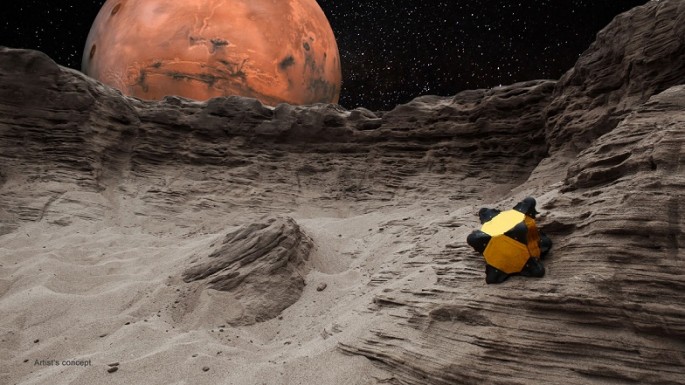When it comes to the exploration of alien worlds like Mars, robots such as the NASA's Curiosity and Opportunity rovers travel and traverse through rough terrain via wheels and do not have the ability to operate upside down. Even more so, complex surfaces and low gravitational forces found in smaller bodies like comets and asteroids can make traditional maneuvers even more dangerous.
Scientists consider these smaller cosmic bodies crucial to unlocking the secrets of the universe since they are considered to carry the building blocks of life for planets which is also recently observed with the European Space Agency's Rosetta mission late last year.
Even if the Rosetta probe successfully deployed its Philae lander on the surface of the Comet 67P/Churyumov-Gerasimenko, the lander suffered a bumpy landing and lost communications as it settled under a deep shadow of a cliff. Since comets like 67P possess weaker gravity than Earth's, the slightest movement can become disastrous for traditional robots.
Now, researchers from NASA's Jet Propulsion Laboratory, MIT (Massachusetts Institute of Technology) and Stanford University have developed a solution this problem with their new "Hedgehog" robot that is specifically designed to traverse and overcome those challenges that are faced upon landing and exploring smaller cosmic bodies.
According to Issa Nesnas of NASA's Jet Propulsion Laboratory, Hedgehog is a totally different kind of robot since it can hop and tumble around the surface as opposed to rolling around in wheels. Since it is in the shape of a cube, it can operate on any of its sides depending where it lands on.
There are now two prototypes of the Hedgehog, where one is covered in spikes that are used as legs and for probing and obtaining samples from the comet's surface and asteroids. The other prototype design involves a basic cube that was already tested on board the C-9 aircraft research under NASA in microgravity conditions last June.
The robots carried out a demonstration of several kinds of maneuvers that can be applied on a wide range of surfaces, from sandy to icy conditions that are all practical especially during a trek on a smaller body with low gravity.
According to Benjamin Hockman of Stanford University, when they did experiments with numerous spike configurations, they determined that the cube prototype is the best design based on hopping performance. He also adds that the cube structure is easier to build and manufacture and transport via spacecraft.
To date, researchers are now developing the robot's autonomous system to increase its abilities to carry out instructions from mission control on Earth. The Hedgehog will operate via a mothership probe similar to how the Curiosity and Opportunity rovers communicate via satellites that are currently orbiting Mars.



























